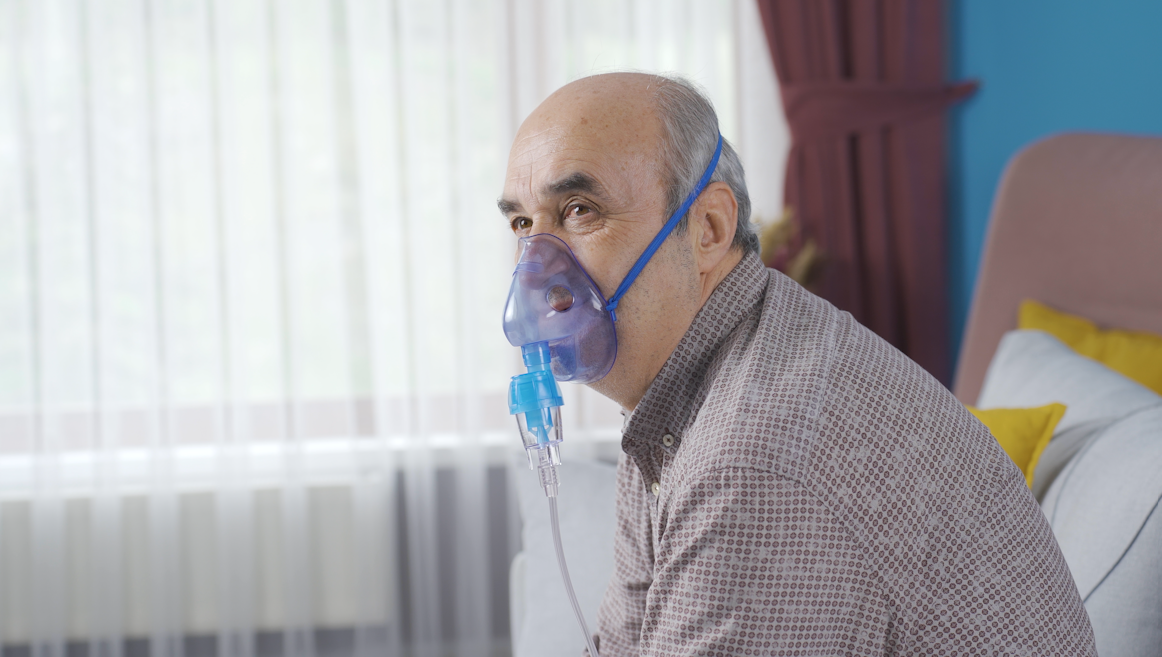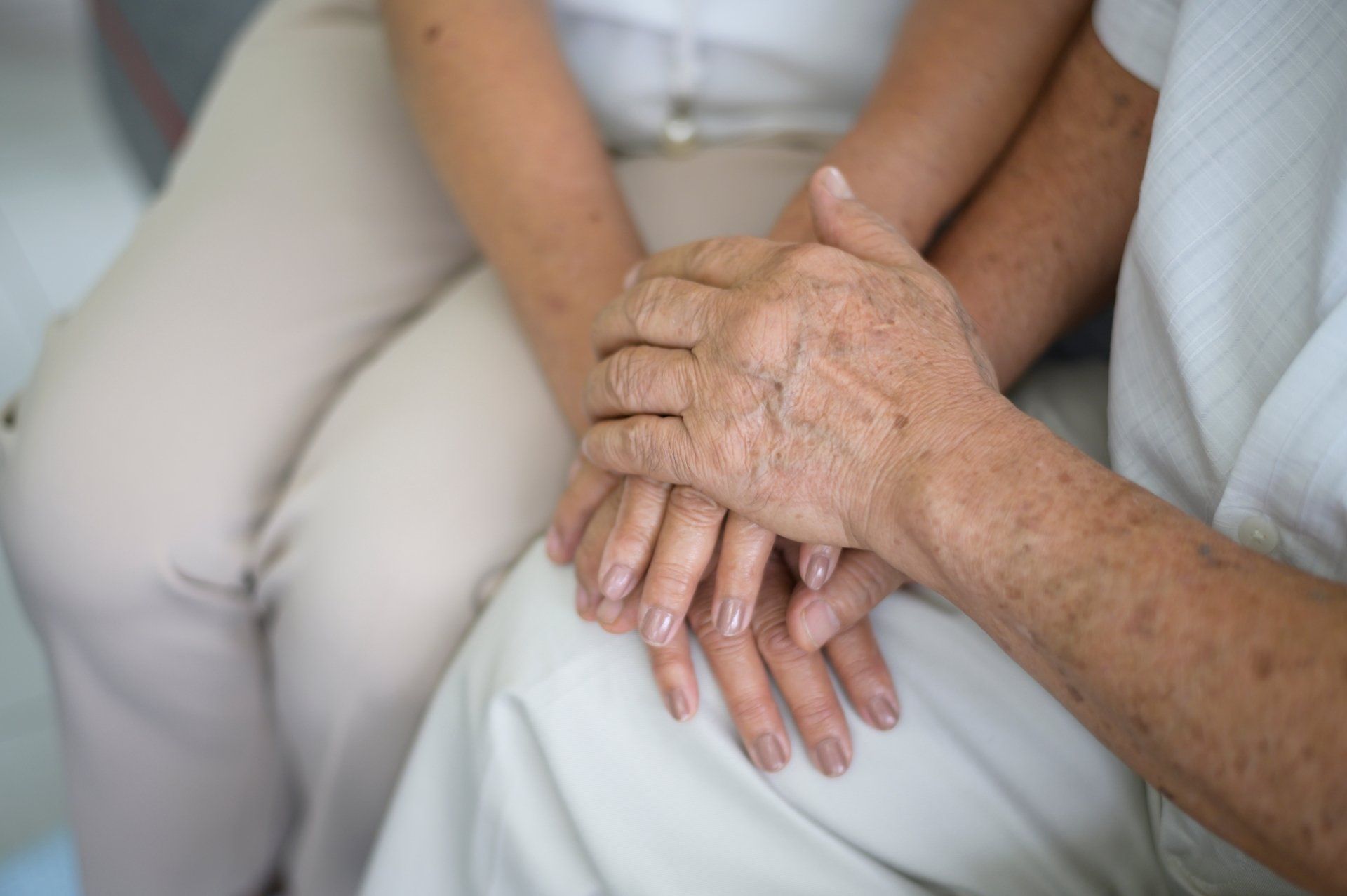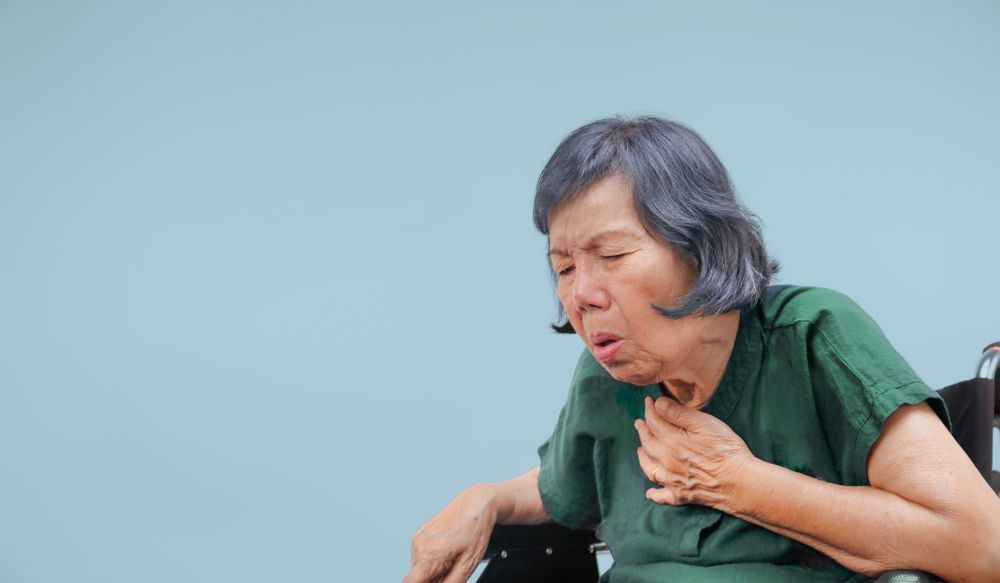Our COVID-19 Response at Elder Care Homecare. Read Now
The Importance of In-Home Nursing Care for Ventilator and Tracheostomy Patients
Ventilators and tracheostomies are medical devices used to assist with breathing for individuals who are unable to breathe independently. Ventilators can be used with trach tubes or face masks, providing mechanical ventilation to support the respiratory system. For instance, a person suffering from a severe lung condition may use a ventilator to help them breathe. The ventilator delivers oxygen-rich air into the lungs, supporting the body's natural breathing process. The ventilator can be adjusted to match the patient's natural breathing pattern, ensuring that they receive the right amount of oxygen at the right time.

Patients with severe respiratory issues may require a tracheostomy, which involves creating an opening in the neck to insert a tube directly into the trachea, bypassing the mouth and nose.This tube, known as a trach tube, provides a direct airway for the ventilator to deliver oxygen to the lungs. For example, a person with a severe spinal cord injury might not be able to control their breathing muscles and would need a tracheostomy to allow a ventilator to assist with their breathing.
Moreover, the healthcare team provides comprehensive training on how to use and maintain the ventilator, ensuring the patient and their caregivers are comfortable managing the device at home. It's essential to have proper equipment for home ventilation, including a backup ventilator, oxygen tank, suction machine, humidifier, pulse oximeter, and nebulizer. These pieces of equipment are critical to ensure that individuals with ventilators and tracheostomies can manage their respiratory needs safely and effectively at home.
Importance of In-Home Nursing Care for Ventilator and Tracheostomy Patients
In-home nursing care is vitally important for individuals with ventilators and tracheostomies. These individuals often require a high level of medical care and supervision that can be challenging for family members to provide without professional support. Ventilator support at home can help avoid complications, such as respiratory infections or ventilator-associated pneumonia, and significantly improve the quality of life for patients. For instance, a nurse can regularly check on the patient, ensuring the ventilator settings are correct, the tracheostomy site is clean and free of infection, and the patient is breathing comfortably.
Regular check-ups and home visits by healthcare professionals are necessary to monitor the patient's condition and adjust the care plan as needed. These visits provide an opportunity to assess the patient's respiratory function, inspect the tracheostomy site and the ventilator equipment, and address any concerns or issues that may arise.In addition to clinical care, in-home nursing care provides personalized attention and assistance tailored to the individual's specific needs. This might include helping the patient with daily activities, such as bathing and eating, or providing emotional support and companionship.
In-home nursing care also allows patients to receive care in a familiar and comfortable environment, surrounded by their loved ones. This can significantly improve the patient's emotional well-being, as being at home can promote a sense of normalcy and reduce the stress and anxiety often associated with hospital stays. For example, a patient on a ventilator might feel more comfortable and relaxed receiving care at home, where they can be surrounded by familiar sights and sounds and spend time with their loved ones.
Benefits of Receiving In-Home Care
Receiving care at home offers numerous benefits for individuals with ventilators and tracheostomies. It reduces the need for frequent hospital visits, allowing patients to stay in a familiar and comfortable environment. For example, a patient who receives in-home nursing care can avoid the stress and inconvenience of regular hospital visits for routine care and check-ups. They can receive this care in the comfort of their own home, reducing the disruption to their daily life and routine.
In-home care also promotes independence and a sense of normalcy for individuals with ventilators and tracheostomies. With professional care and support at home, these individuals can participate in their daily activities and maintain their lifestyle as much as possible. This can significantly improve their quality of life and emotional well-being. For instance, an individual on a ventilator might be able to continue enjoying their favorite hobbies or activities at home, with the assistance and supervision of their in-home nurse.
Furthermore, in-home care provides a higher level of personalized care and attention compared to institutional settings. In-home nursing care providers can tailor their services to the specific needs and preferences of each patient, ensuring they receive the best possible care. In addition to medical care and support, these providers can offer additional services such as meal preparation, housekeeping, and transportation to appointments. This comprehensive approach to care can greatly enhance the patient's quality of life and overall well-being.
Services Provided by In-Home Nursing Care Providers
In-home nursing care providers offer a wide range of services for individuals with ventilators and tracheostomies. These services include ventilator and tracheostomy care, administration of treatments and medications, nutritional counseling, and device inspection. For example, a nurse might visit a patient at home to check their ventilator settings, clean their tracheostomy site, administer their medications, and provide them with nutrition advice to support their overall health and well-being.
In-home nursing care providers also provide training to family members and caregivers on how to handle the equipment and perform essential tasks. This includes teaching them how to clean and maintain the ventilator, how to care for the tracheostomy site, and how to recognize and respond to potential complications. For instance, a nurse might demonstrate to a caregiver how to clean the tracheostomy tube, how to check the ventilator settings, and what to do if the patient has difficulty breathing.
In addition to these core services, in-home nursing care providers can assist with a variety of everyday tasks, making life easier for patients and their families. This might include assistance with bathing and toileting, meal preparation, medication reminders, housekeeping, running errands, and transportation to appointments. By providing this comprehensive range of services, in-home nursing care providers can support the overall health and well-being of individuals with ventilators and tracheostomies, helping them to maintain their independence and enjoy a better quality of life at home.
Finding and Choosing a Reliable In-Home Nursing Care Provider
When searching for an in-home nursing care provider, it's essential to consider their experience and expertise in caring for individuals with ventilators and tracheostomies. It's important to choose a provider who has the skills and knowledge to deliver high-quality care and to manage any potential complications effectively. For example, a patient might choose a nursing care provider who has specific experience in managing ventilators and tracheostomies, as they would have the expertise to provide the specialized care that the patient needs.
One way to find a reliable in-home nursing care provider is to seek recommendations from healthcare professionals, support groups, or online resources. Healthcare professionals can often recommend reputable providers who specialize in caring for individuals with ventilators and tracheostomies. Support groups and online resources can also provide valuable information and reviews from other patients and families who have used these services.
In addition to considering the provider's experience and qualifications, it's also important to verify if the provider is licensed, accredited, and has positive reviews and testimonials. These factors can provide reassurance about the quality of care the provider delivers. It's also beneficial to conduct interviews with potential providers to discuss their services, availability, and compatibility with the patient's needs. For instance, a patient might ask a potential provider about their experience with ventilator and tracheostomy care, their availability for home visits, and their approach to patient care.
Finally, it's essential to request references and contact previous clients to gather feedback on the provider's quality of care. This can provide valuable insights into the provider's professionalism, reliability, and effectiveness in delivering care. By thoroughly researching and evaluating potential providers, patients and their families can find a reliable in-home nursing care provider who can meet their specific needs and preferences.
Cost Considerations for In-Home Nursing Care
The cost of in-home nursing care for ventilator and tracheostomy patients can vary depending on several factors, including the location, the level of care required, and the duration of services. For example, a patient who requires 24-hour nursing care at home may face higher costs than a patient who only needs a nurse to visit a few times a week. Similarly, the cost of care may be higher in areas with a high cost of living compared to areas where the cost of living is lower.
It's important to check if the provider accepts insurance or Medicare/Medicaid, and to understand the coverage and reimbursement options. Some insurance plans may cover the cost of in-home nursing care for patients with ventilators and tracheostomies, while others may only cover a portion of the cost. Patients should contact their insurance provider to discuss their coverage and to find out what costs they will be responsible for.
Moreover, it's crucial to discuss the fees and payment structure with the provider, including any additional charges for specialized care or emergency services. This can help patients and their families plan for the cost of care and ensure they can afford the services they need. Some providers may offer a sliding scale fee structure based on income, which can make care more affordable for some patients.
Finally, it's worth exploring financial assistance programs or grants specifically available for individuals requiring in-home nursing care. These programs can help offset the cost of care and make it more accessible for individuals who need it. When considering the costs of in-home nursing care, it's important to weigh them against the benefits and convenience of receiving care at home. While the cost can be a significant factor, the improved quality of life and independence that in-home care can provide can make it a worthwhile investment.
Maintaining Hygiene and Preventing Infections
Maintaining hygiene is crucial for individuals with ventilators and tracheostomies to prevent bacterial infections, particularly around the insertion point of the endotracheal tube. Caregivers should wash their hands frequently and maintain a clean environment to reduce the risk of infection. For instance, a caregiver might wash their hands before and after touching the ventilator or tracheostomy tube, and regularly clean and disinfect surfaces in the patient's environment.
Regular cleaning and disinfection of equipment, including the ventilator and tracheostomy tube, are also necessary. Caregivers should follow the manufacturer's instructions for cleaning the equipment, as well as any additional guidelines provided by the healthcare team. For example, a caregiver might clean the ventilator's filters and tubing regularly, and sterilize the tracheostomy tube as instructed by the nurse or doctor.
Caregivers should also be trained to handle issues related to the endotracheal tube, such as dislodging, blockage, bleeding, and infections. They should be able to recognize the signs of these complications and know what actions to take if they occur. For instance, if the tracheostomy tube becomes blocked, the caregiver should know how to clear the blockage or when to seek immediate medical assistance.
Following the healthcare team's instructions and seeking professional help when needed is critical to ensure the patient's safety and well-being. By maintaining hygiene and taking preventative measures, caregivers can significantly reduce the risk of infections and complications related to ventilators and tracheostomies.
The Role of Caregivers in In-Home Care
Caregivers play a vital role in supporting individuals with ventilators and tracheostomies at home. They provide both physical and emotional support, helping to manage the patient's medical needs and enhancing their quality of life. For example, a caregiver might assist the patient with daily activities, provide companionship, and offer emotional support and encouragement.
Caregivers should receive proper training on operating and maintaining the equipment used for ventilator and tracheostomy care. This includes learning how to adjust the ventilator settings, clean and care for the tracheostomy site, and manage any potential complications. For instance, a caregiver might attend a training session with the healthcare team to learn how to use the ventilator, how to clean the tracheostomy tube, and how to recognize and respond to signs of infection or other complications.
In addition to managing the medical aspects of care, caregivers should also monitor the patient's overall well-being. This includes observing the patient's breathing sounds, measuring oxygen saturation levels, and being aware of any signs of discomfort or distress. For example, a caregiver might regularly check the patient's oxygen levels using a pulse oximeter, and report any changes or concerns to the healthcare team.
Moreover, caregivers should maintain open communication with healthcare professionals and promptly report any concerns or changes in the patient's condition. Regularly updating the healthcare team about the patient's status can help ensure that the care plan is adjusted as needed and that any potential issues are addressed promptly. Finally, caregivers should also prioritize self-care to prevent burnout and ensure their own well-being. Caring for a loved one with a ventilator or tracheostomy can be demanding, and it's important for caregivers to take care of their own health and well-being as well.
The Importance of Communication in In-Home Care
Effective communication between the patient, caregiver, and healthcare team is crucial for effective in-home care. Regular and clear communication can help ensure that the patient's needs are met, that potential issues are addressed promptly, and that the patient's care plan is adjusted as needed. For example, a caregiver might keep a daily log of the patient's symptoms, ventilator settings, and any changes in their condition, and share this information with the healthcare team during regular check-ups.
Caregivers should also keep track of the patient's progress and any changes in their condition, and report this information to the healthcare team. This can help the healthcare team adjust the ventilator settings or medication dosages, if necessary. For instance, if a caregiver notices that the patient is having difficulty breathing or is showing signs of distress, they should communicate this to the healthcare team so that appropriate action can be taken.
Furthermore, caregivers should inform the healthcare team about any challenges or difficulties they face in managing the care at home. This could include issues related to using the equipment, managing the patient's symptoms, or coping with the emotional stress of caring for a loved one with a ventilator or tracheostomy. By openly sharing these concerns, the caregiver can receive the support and guidance they need to manage these challenges effectively.
Collaborative and open communication is key to creating a supportive and effective care environment for individuals with ventilators and tracheostomies. By working closely with the healthcare team and actively participating in the patient's care, caregivers can help ensure that the patient receives the best possible care and support at home.
The Role of Home Health Care Providers
Home health care providers, such as Golden Health Services, specialize in providing in-home nursing care for individuals with ventilators and tracheostomies. These providers offer a wide range of services to ensure the well-being and safety of patients, including ventilator and tracheostomy care, medication administration, nutritional counseling, and device inspection. For example, a nurse from Golden Health Services might visit a patient at home to check their ventilator settings, clean their tracheostomy site, administer their medications, and provide them with nutrition advice.
Home health care providers can also coordinate with other healthcare professionals to provide comprehensive and holistic care. This might involve working closely with the patient's doctor to manage their medical needs, collaborating with a physical therapist to support the patient's physical health, or coordinating with a social worker to address the patient's social and emotional needs. For instance, a home health care provider might coordinate with the patient's doctor to adjust their ventilator settings, work with a physical therapist to develop an exercise plan for the patient, and collaborate with a social worker to provide emotional support and counseling.
In addition to these core services, home health care providers may also offer additional support services such as physical therapy, occupational therapy, and social work. These services can further enhance the patient's quality of life and well-being, helping them to maintain their independence and enjoy a better quality of life at home. The goal of home health care providers is to promote independence, improve quality of life, and support the overall well-being of individuals with ventilators and tracheostomies.
New York City Elder Home Care Blog







Elder Care Homecare looks after seniors and individuals with disabilities through dependable companion care and in-home care services.
We service Westchester County, Long Island and the entire New York City metro area including Queens, Brooklyn, The Bronx, and Manhattan.
QUICK LINKS
CONTACT
Call Us Today:
(914) 268-6221
Caregiver or Employment Inquiries: (914) 414-4841
111 Brook St
Scarsdale, NY 10583
370 Lexington Ave
New York, NY 10168
United States
1025 Old Country Road
Suite 314
Westbury, NY 11590
750 E Main St
Stamford, CT 06902



